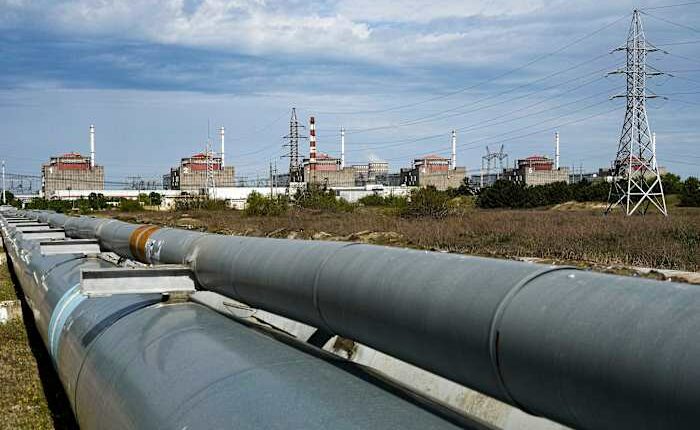Share this @internewscast.com

KYIV – Russia’s ongoing assault on Ukraine’s power infrastructure heightens fears over the safety of the nation’s nuclear sites after a drone attack cut power for over three hours at the location of the 1986 Chernobyl nuclear disaster and as Europe’s largest atomic power plant remains off the grid, according to officials.
While not operational, both the Chernobyl site and the Russian-occupied Zaporizhzhia Nuclear Power Plant need a continuous power supply to maintain essential cooling systems for spent fuel rods to prevent a possible nuclear incident.
A power outage could also disable the radiation monitoring systems, which have been installed to enhance security at Chernobyl by the U.N. nuclear oversight body, the International Atomic Energy Agency.
“Russia is purposely creating the risk of radiation incidents,” Ukraine’s President Volodymyr Zelenskyy stated on Wednesday evening, criticizing the U.N. watchdog and its leader Rafael Mariano Grossi for what he called insufficient responses to the threat.
“Every day of Russia’s war, every attack on our energy facilities, including those tied to nuclear safety, is a global hazard,” he said. “Weak and partial measures will not suffice. Strong action is necessary.”
The conflict that erupted following Russia’s full-scale invasion of its neighbor over three years ago does not seem any closer to resolution, despite ongoing U.S.-led diplomatic efforts for peace.
Zelenskyy said in his nightly video address that Russian launched over 20 Shahed drones against energy infrastructure in Slavutych, the city whose power supply services Chernobyl, the site of the world’s worst nuclear accident.
A wave of drones overwhelmed defenses and caused a blackout, he said, affecting the sarcophagus that prevents radioactive dust from escaping the destroyed fourth reactor and storage housing more than 3,000 tons of spent fuel. He did not provide details of how it was affected.
“The Russians could not have been unaware that a strike on Slavutych would have such consequences for Chernobyl,” Zelenskyy said.
Last February, a drone armed with a warhead hit Chernobyl’s protective outer shell, briefly starting a fire. Radiation levels there did not increase, officials said.
Meanwhile, the Zaporizhzhia plant, which is one of the 10 biggest nuclear facilities in the world, has been disconnected from the grid for over a week.
Zaporizhzhia has repeatedly been caught in the crossfire during the war. Zelenskyy blamed Russian artillery for cutting the power line to the plant, but Kremlin spokesman Dmitry Peskov said it was Ukrainian shelling.
The facility is using emergency diesel generators to run cooling systems for its six shutdown reactors and spent fuel.
The IAEA says the plant is not in immediate danger but wants it swiftly reconnected to the grid.
The Institute for the Study of War, a Washington think tank, said Russia’s occupation of Zaporizhzhia has “significantly degraded” the security of the plant.
It claimed Wednesday that Moscow wants to integrate the plant into the Russian grid — a move that will “exacerbate security risks, degrade Ukraine’s future power generation capacity, and serve as a tool that Russia can use to legitimize its occupation of Ukraine.”
___
Hatton reported from Lisbon, Portugal.
___
Copyright 2025 The Associated Press. All rights reserved. This material may not be published, broadcast, rewritten or redistributed without permission.











